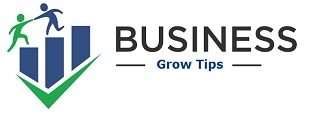As remote work becomes increasingly prevalent, productivity software has emerged as an essential tool for managing workflows and enhancing efficiency. By leveraging the right software, businesses can ensure that their remote employees remain productive, engaged, and aligned with company goals. Here’s how productivity software can significantly improve the workflow for remote employees.
How Productivity Software Can Make the Workflow More Productive for Remote Employees
Streamlining Communication
Effective communication is crucial for remote teams, and productivity software offers robust solutions to bridge the gap between geographically dispersed employees.
- Instant Messaging and Chat Platforms: Tools like Slack, Microsoft Teams, and Discord provide real-time communication channels that enable quick discussions and instant feedback. These platforms also support group chats and channels dedicated to specific projects or departments, keeping conversations organized and accessible. That’s a tough task to accomplish, but you can try the Pomodoro technique, stay in touch.
- Video Conferencing: Video conferencing software, such as Zoom and Google Meet, facilitates face-to-face interactions, which are vital for team cohesion and collaboration. Regular video meetings help maintain a sense of connection and ensure everyone is on the same page.
Enhancing Collaboration
Collaboration is the cornerstone of successful remote work. Productivity software offers a variety of tools to ensure that team members can work together seamlessly, no matter where they are located.
- Cloud-Based Document Sharing: Platforms like Google Workspace and Microsoft 365 allow multiple users to work on the same document simultaneously. Features such as real-time editing, comments, and version history make it easy to collaborate on documents, spreadsheets, and presentations.
- Project Management Tools: Software like Asana, Trello, and Monday.com provides comprehensive project management solutions. These tools help teams track tasks, set deadlines, assign responsibilities, and monitor progress. Visual project boards and Gantt charts offer clear overviews of project timelines and dependencies, ensuring that everyone knows what needs to be done and when.
Improving Time Management
Time management is a critical aspect of remote work productivity. Productivity software can help remote employees manage their time more effectively, leading to better outcomes and reduced stress.
- Time Tracking Software: Utilizing a remote employee monitoring software enables employees to track the time spent on various tasks. This data helps individuals understand how their time is being used and identify areas for improvement. Managers can also use this information to allocate resources more efficiently and ensure that projects stay on track.
- Task Management Apps: Apps like Todoist and Wunderlist help employees organize their tasks, set priorities, and create to-do lists. These tools promote better time management by helping users focus on their most important tasks and avoid procrastination.
Ensuring Accountability
Accountability is crucial for maintaining productivity in a remote work environment. Productivity software provides mechanisms to monitor performance and ensure that employees are meeting their goals.
- Performance Monitoring: Tools like Hubstaff and Time Doctor offer detailed insights into employee activities, such as time spent on specific tasks and websites visited. This data helps managers identify productivity trends and address any issues promptly.
- Goal Setting and Progress Tracking: Software like OKR (Objectives and Key Results) platforms, such as Weekdone, helps teams set clear goals and track their progress. By aligning individual and team objectives with company goals, these tools ensure that everyone is working towards common targets.
Promoting Work-Life Balance
Maintaining a healthy work-life balance is essential for remote employees to remain productive and avoid burnout. Productivity software can help achieve this balance.
- Automated Reminders and Notifications: Tools that send reminders and notifications for upcoming deadlines or meetings help employees stay organized and reduce the mental load of remembering tasks.
- Wellness and Mindfulness Apps: Apps like Headspace and Calm integrate with productivity platforms to promote mental well-being. These tools offer guided meditation, stress management tips, and other resources to help employees stay healthy and focused.
Conclusion
Productivity software is a game-changer for remote work, offering tools that streamline communication, enhance collaboration, improve time management, ensure accountability, and promote work-life balance. By integrating these tools into their workflows, businesses can create a productive, efficient, and supportive environment for their remote employees. Embracing productivity software is not just about keeping employees busy but empowering them to work smarter, achieve their goals, and contribute meaningfully to the organization’s success

